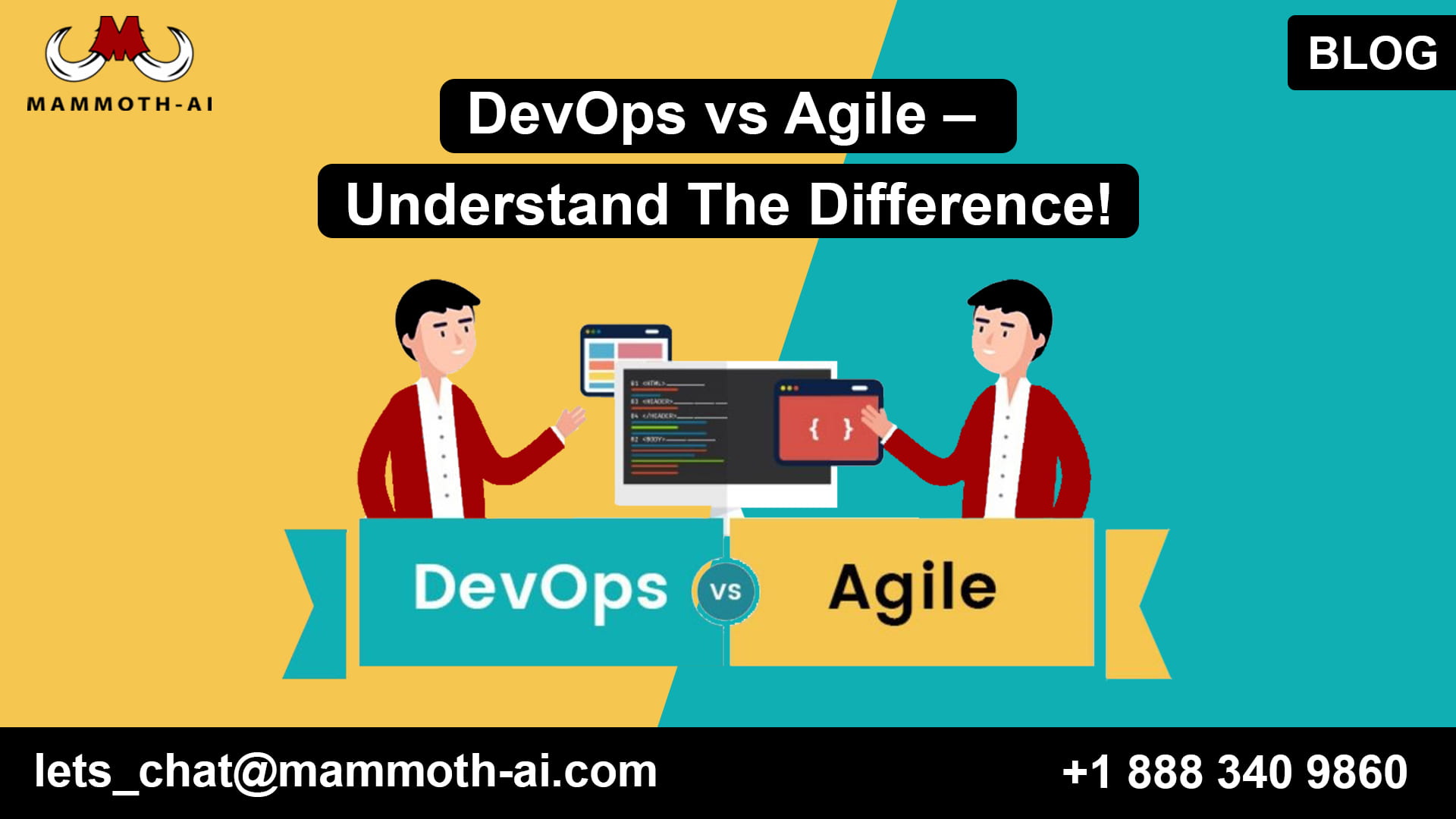Agile vs. DevOps — It will be easier to comprehend the distinctions between Agile and DevOps if you have a solid understanding of both. They’re both software development methodologies with the same end aim. Agile has a longer history than DevOps, which is relatively young. The methodology for both is the same: how can we get to the goal as quickly as possible?
We need to know how each of these approaches works on the inside. We’ll look at both Agile and DevOps in this essay, then compare and contrast their significant differences.
What Is Agile?
Let’s start with an explanation of where the agile methodology came from. This strategy tries to establish more intelligent software development methods while also supporting others.
The Agile Manifesto’s four values are:
- Over processes and tools, it’s about people and their interactions.
- Working software trumps thorough documentation.
- Collaboration with customers is preferred over contract negotiations.
- Adapting to change in accordance with a strategy
These four values formed the agile software development concept. Agile drives acquisition in general, with teamwork and responsibility motivating leaders.
An important aspect of the agile mindset is a constant focus on aligning growth with trends and consumer needs.
Agile technique is at ease with the unknown and content with adapting to change as it happens. Instead of planning, the agile approach focuses on staying involved throughout the process. Rather than avoiding change or pretending it doesn’t exist, agile approach views it as a necessary corollary to meeting client needs.
In an agile approach, the customer is there from the start. They play a crucial role in determining the desired criteria.
The agile technique also emphasizes the importance of teamwork. The development teams, testers, and project managers are all involved in this. Roles are assigned, and the team as a whole agrees.
What Is DevOps?
The basic foundation of DevOps is a process that focuses on collaborating and homogenizing IT professionals’ communication. This enables products to be transported in the quickest possible time.
The relationship between Development and Operations teams is at the heart of the DevOps culture. Code deployment and production can now be done in a more quick and automated manner thanks to the participation of these teams. It’s vital to recall that these teams used to work in silos from the beginning to the end.
DevOps should not be viewed as a position in a business, but rather as a responsibility that they take on to ensure a smoother flow of activities.
The principles of DevOps can be defined in three different ways. These are the following:
- The Flow Principles
- Feedback principles
- Continuous learning principles
The three ideas listed above focus on how to speed up the flow of work at each stage of the process. It examines the consistency of input in terms of frequency and speed throughout the growth cycle. As an established element of a company, constant learning and analysis are required.
The DevOps approach necessitates the incorporation of a shared culture as well as flexibility. It is concentrated on information technology and software development.
The success of software delivery is critical since it impacts the organization’s mission, profit margins, and customer happiness. Organizational culture is critical because it has a direct impact on performance. How well do you understand this as a company and how essential is it to you?
Agile vs DevOps – Key Differences
An agile team is typically smaller in size, allowing for better communication and reaction time. This adapts to changes in client behavior or wants that occur frequently. For a larger DevOps team focused on faster delivery timelines, the situation is the polar opposite.
Individuals are accountable for various roles throughout the process in the Agile approach. They are responsible for everything in DevOps. When it comes to goals, agile focuses on software development, while DevOps focuses on rapidly delivering sequential business solutions.
The agile reduplication method focuses on timely releases, feedback, and relationship building. All of these teams are brought together by DevOps.
Agile is best recognized for its lean methodology. It’s all about cutting costs in DevOps. DevOps emphasizes regular testing and delivery, and an agile strategy is likewise tailored for fluctuating change.
Sprints, which can last anywhere from a week to a month, are used in the agile approach. This is how teams keep track of their development timelines. DevOps, on the other hand, stresses that software can be released multiple times per day.
As a result, current business models may require agile to move past a static work environment in compared to DevOps, where teams must collaborate. Both have significant advantages and disadvantages, so be careful not to adopt only one. Both recognize the value of collaboration and teamwork.
Both can be used to complement one other by organizations and development teams. At the end of the day, the user’s needs must always be first. Both of these approaches take this into account and are adaptable enough to accommodate changes in demand.
Final Thoughts
DevOps and Agile approach are not the same thing. However, their resemblances may lead one to believe they are the same person. The fact that they can coexist is what gives them significance. After all, they both seek to provide value to the consumer, the end-user.
For more info: https://www.qaaas.co.uk/testing-services/
Also Read: https://www.guru99.com/software-testing.html


